30-second summary:
- Take advantage of Google’s search market domination with two spots on the first page of Google – Local pack and localized organic search results.
- Optimize for high converting local keywords, establish a local content schedule, and more.
- Founder of Digital Ducats Inc. shares a thorough guide on everything you need for a successful local SEO strategy.
For many companies, an effective SEO strategy for local business is the key factor for increasing revenue from high converting traffic. Local SEO can mean the difference in outranking authority websites for vital keywords within your city.
Along with the overall benefits of SEO, optimizing to compete locally improves your search visibility for keyword searches made from your location.
Many aspects of local SEO have remained the same over the last few years however, the weight of local ranking factors has shifted creating new priorities for local businesses.
One aspect that remains the prime focus for every local business is the significance of Google My Business.
1. Gain instant visibility with GMB
Google My Business has been instrumental in driving customers to a local business. Considering the search engine market share that Google holds, you’re literally losing money by not having a GMB listing.
As of June 2020, Google tops the charts for search engine market share boasting 86% of desktop and 95% of total mobile searches.

It should be clear that failing to prioritize your presence in GMB can cost your company thousands of dollars.
One of the many advantages that Google My Busines allows is instant search visibility for a business operating in a locality. Rather than going through the process of ranking your own domain, your website receives instant search visibility from local searches within close proximity.
The Possum update made proximity a primary ranking factor for achieving a top position in the Local Pack. Your company can appear on the first page of results based on the distance between your location and the location of a user.
In 2020, according to the State Of Local SEO Industry Report, proximity has fallen to the third most influential ranking factor behind on-page optimization and reviews. The general consensus among those surveyed is that optimizing your listing is the top priority for ranking in the Local Pack.
2. Optimize your GMB profile
Optimize your GMB listing just as you would your website in terms of providing as much information to search engines as possible. The more detail you can provide in your profile, the more information search engines have to reference your business for keyword related searches.
NAP details
Fill in every option available to maximize your opportunities to appear in the Local Pack. Name, address, and phone number (NAP details) are extremely important to have spelled correctly.
Obviously, this is important for users to receive the correct information. Search engines will also verify your business details with third party citations.
Explore all category options
One of the biggest mistakes small business owners make is failing to include the correct categories. There has been a countless number of clients that have been able to rank in the Local Pack by simply adding the correct category for their business.
Google updates the list of eligible categories your business can fall under. It’s advisable to check periodically for new categories that would enhance the accuracy of your listing.
One way to explore any options you may have missed is to search Google for the local keywords you’re targeting. Check the Local Finder for the categories that your competition is using to rank in the top positions.
Keyword optimization
It should be noted that on-page optimization is proving to be the strongest ranking factor for ranking in the Local Pack. This can be a source of frustration for those who operate under Google guidelines since Google has allowed keyword stuffing to trump other ranking factors.
If you’re adhering to Google’s guidelines, the name of your business should be the only thing in your GMB listing. What should be happening and what is actually working are two different things that have created somewhat of a loophole and a grey area for SEO.
The fact is that using the keyword in the name of your business will get you results. It’s as simple as that.
If you’re starting a business that operates in a specific city it’s highly effective to incorporate your main keyword in the name of your business. It’s been so effective that it’s led to keyword stuffing-which, in theory, should be penalized-but seems to be left unregulated.
Here is an example of successful keyword manipulation for the phrase “bespoke suits Toronto”. Each of these sites outranks other sites based on the name used in the GMB profile.
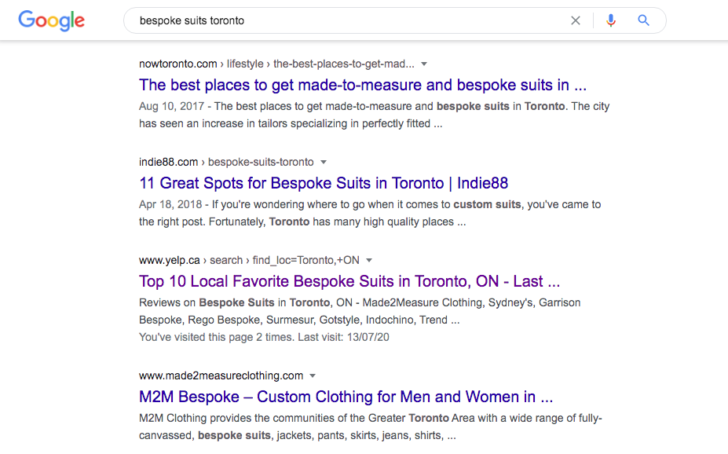
It’s hard to say what will prevail in the long run because the evidence points to the fact that this is working to rank sites. After monitoring this listing for over 6 months, it continues to rank and undoubtedly reaps the benefits of local traffic from a prime placement in the local pack.
3. Build your local presence with citations
Structured citations an essential element in local SEO despite the reduced effectiveness they once had as a ranking factor. Their purpose serves two functions; to validate your business information for search engines; to provide additional targeted traffic.
List your business in well-known directories
List your business in the largest and most relevant directories for your city or region to get the most coverage from relevant citations. Some of the most obvious are Bing and Yahoo since they both have local business listings.
Major directories will typically serve as a source of information for much smaller, but relevant websites. Your business information is essentially distributed to dozens of other directories that will help to establish the validity and credibility of your business.
The major directories from each country and region can vary so it’s important to establish which sites will have the most impact with the least effort.
In Canada, posting your business on Yellow Pages results in a wide distribution of sites that are relevant to Canada. Moz provides an excellent visual as an example of the distribution network Yellow Pages provides.
Source: Moz
Here’s an example of the U.S. local ecosystem provided by Moz (keep in mind these images are now a few years old). According to this illustration below, there are many major directories that can have a large impact on your search visibility in the U.S.
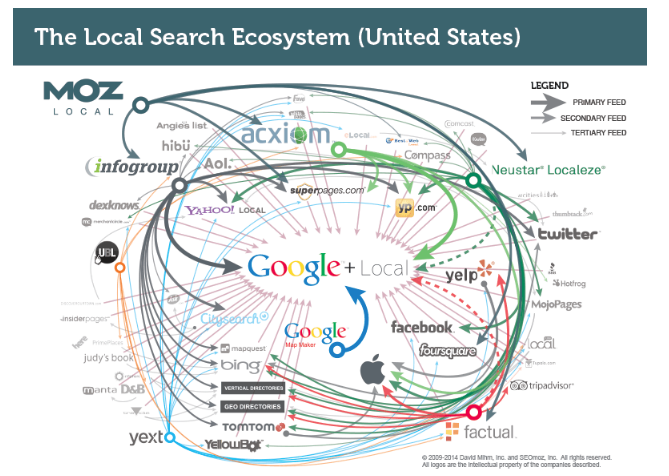
Search for niche and local directories
Enhance the profile of your citations and improve your sources of traffic by searching for directories that are niche-specific and location-specific.
Getting a few links from directories that are in your niche and location will improve the relevance of your site in both areas. Look for relevant directories by using the following in a search:
[Your niche] + directories
[Your location] + directories
Qualify each directory
Make sure the sites you choose to place your business have a decent amount of traffic and authority. Even if a directory is unique in your city, if it has a high spam score (use Mozbar to filter these sites), or has extremely low domain authority it may do more harm than good.
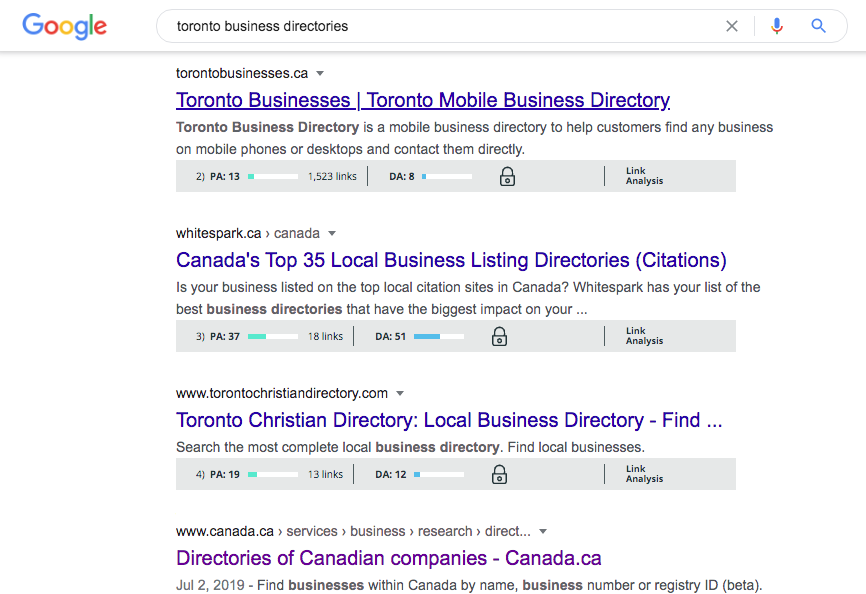
SEMRush is also a good tool to use for a quick reference on the amount of traffic a website receives. If the organic search traffic is a bust, don’t list your company website on it.

You don’t need a lot of these sites to complete an effective citation profile. Google won’t give a whole lot of credit for acquiring easy links. The goal of this endeavor is to create significant ties to your city and industry and position your company on sites that get relevant traffic.
4. Establish your content strategy
Your website is only as good as the content you publish. Create content to serve as a resource for clients. Educational content produces three times as many leads as paid ads. Keep in mind you will need to publish both educational content as well as local SEO content for more localized search result appearances.
The initial stages of your content strategy should be to create the most important pages with local service areas in mind. Is your business focused on one location only, or will you service multiple areas? This determines whether you will be publishing location pages for multiple cities or have a central location.
Single location businesses
If your business is focused on one location, you can incorporate geo-modifiers in your URLs and titles. Optimize your service/product pages to appear in city-specific searches using your location as part of your keywords.
Businesses with multiple service areas
For multiple service areas, you will need to publish location pages to target the areas you want your business to appear for in city-specific searches. Location pages should have unique content for each city and include the NAP details of each location.
Publish content for each level of the marketing funnel
The most important pages of your site are the bottom of the funnel pages that urge visitors to make a purchase. Focus your initial content strategy on publishing mid-funnel content that targets long-tail keywords.
The sweet spot for identifying target keywords is low competition, high volume keywords. What determines “high volume” can vary depending on the industry. Aim to beat your competition with long-tail keywords that convert at a higher rate.
Publish local content
Your local SEO content strategy can include a variety of options to increase the relevance to your location. Your content can include city-specific events that you’re company is involved in, or events that are related to your industry.
Your local content strategy should include regular posts on Google My Business. Approximately 17% of businesses post to GMB on a weekly basis. Create a competitive advantage by sticking to a bi-weekly posting schedule.
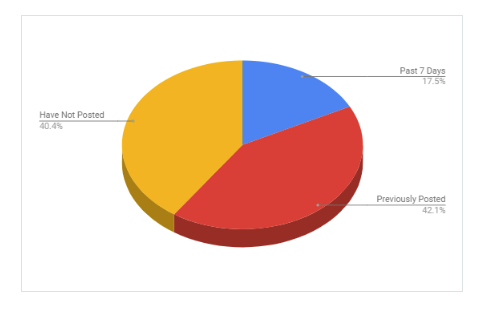
The posts don’t need to be extensive, persuasive essays to get the job done. They can even be excerpts from blog posts to lead users to the actual article on your site. Posting to GMB creates more entry poPosting images can attract a lot of search views and get people to your site as well. Images of products or finished projects will grab the attention of users to help drive more traffic to your site.ints to your website and promotes more user engagement through your business’s knowledge card.
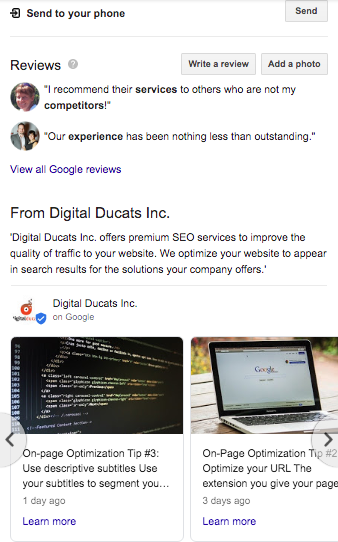
GMB has a category to post special offers, updates, and important information about your company. Capitalize on the areas that other companies are not doing well by including GMB posts in your local content strategy.
Posting images can attract a lot of search views and get people to your site as well. Images of products or finished projects will grab the attention of users to help drive more traffic to your site.
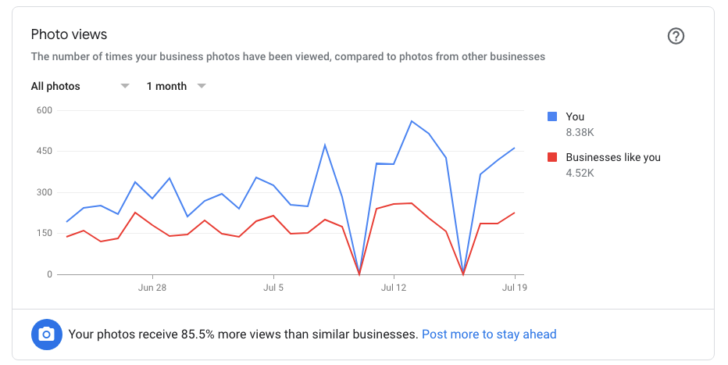
5. Local link building
The majority of local businesses have a backlink profile that is primarily made up of directory links and profile links. An effective link building strategy for a local business is one that appears natural and above all, demonstrates evidence of relevance to your industry and city.
Build domain authority with linkable assets
The blog of every local business can be used to build authority in your industry. Publish linkable assets and insightful resources for both clients and amplifiers.
Amplifiers, as explained by Rand Fishkin, have a significant impact on the backlinks you acquire since they are the people most likely to link to your site. Creating content for amplifiers gives your site more reasons to acquire links and increase the domain authority of your site.
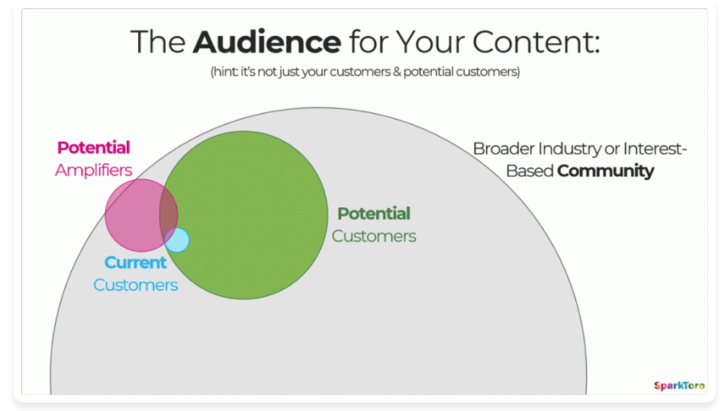
Linkable, shareable content makes link building much easier. You can publish guest posts, submit press releases, and reach out to authority sites in your niche to link to the inner pages of your website to increase domain authority.
Increase local ranking power with local links
Local links are considered the most powerful when it comes to localized search results as well as appearing in the Local Pack. Local links are also considered unstructured citations. Local links can come from local businesses, local newspapers, local chambers of commerce, and local event sites.
Form a local business alliance
Finding businesses within your industry is ideal for creating a local alliance and boosting your ranking ability. For example, if you’re a hot tub retailer some of your best links would come from local businesses that sell swimming pools.
As long as you don’t compete for the same products, a local business in your industry or a close vertical is the most ideal source of links.
Resource link building targeting vendors and client sites
You can improve the likelihood of obtaining local links by using your own network of resources. Companies you already do business with make for ideal link prospects.
For example, a restaurant can ask the baker who supplies their bread rolls to link from their site.
A plumber can ask his equipment suppliers and vice versa.
Ideally, you want to target business owners with whom you already have an existing relationship.
6. Review management
The reviews your business receives have the power to influence a user’s decision on whether or not to choose your company. Review management remains a top priority for local businesses to improve search visibility and maintain a good reputation.
A review strategy should include a way to get more Google reviews as well as reviews on review sites that get search visibility for related keywords. If customers are reviewing your business on sites that are niche-specific it will impact search visibility as well as promote positive ranking signals.
Identify the most important review sites in your industry
There is a major review site for every industry. It’s important to identify what review sites get a lot of traffic and reviews to position your site to receive quality prospective clients.
For example, people use Yelp or Trip Advisor to find a good restaurant in a city they’re no familiar with. People read the reviews and experiences of previous customers before making a final decision.
If you’re in the home goods business Homestars would be important sites to ask a few clients to write you a review. Here’s a 10/10 review left for Canadian Home Leisure, a hot tub retailer in Whitby, ON.
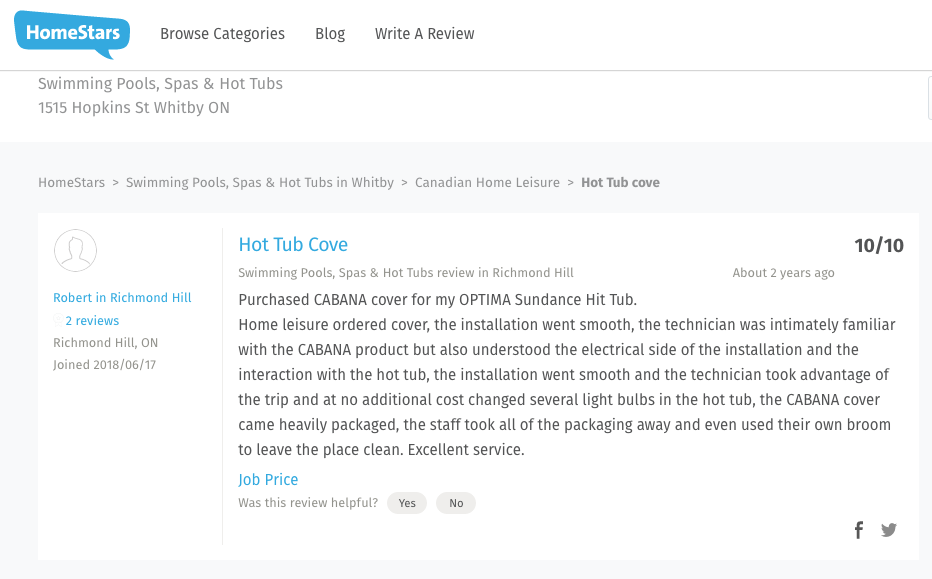
Look at the domain metrics for a site like Homestars. Not only can you get a quality backlink, but there is a ton of traffic that goes through their site.

If you’re not sure which review sites play an impact on search visibility, search for:
best + [your keyword] + [your city]
The intent of most searches that use best at the start indicates that users are looking for options, which trigger the major reviews and directory sites in your niche. Here’s a search for best suits in Toronto:
Each of these sites could be an additional way for customers to find you. Yelp looks like it’s the only review site that you can manage for free.
In fact, Yelp ranks #3 and #4. If you’re in the business of selling suits in Toronto, Yelp is definitely a site to put effort into building a detailed profile and customer reviews.
In many cases, keywords that you’re targeting will display a few directory and review sites in the search result. These are indications that those sites are not only relevant to enhance your optimization, but they will drive traffic to your site as well.
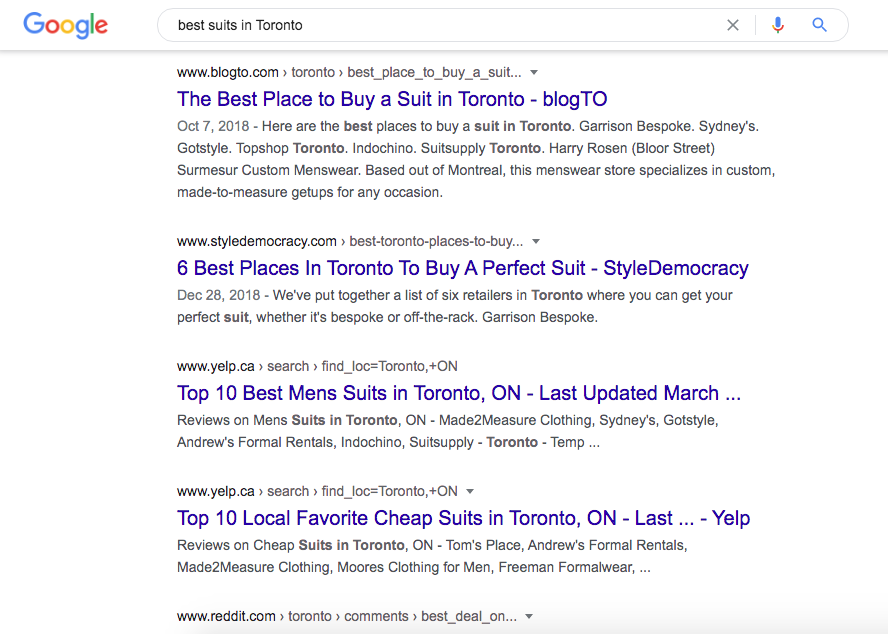
Establish your review acquisition strategy
This doesn’t need to be a major operation but you should have a plan in place that consistently gets you reviews. Avoid mass emails or anything that would look spammy such as a review station at your location. Too many reviews from the same IP could cause red flags and result in your reviews being ignored and discounted.
You can influence five-star reviews on the major review sites for your business by asking customers that you’re sure has had a good experience with your company. You can do this in a few ways:
- Train employees to ask for a review after the completion of a sale.
- Email satisfied customers thanking them for their business with links to a few different review sites.
- Hand out instructions on how to review your business along with a receipt.
Respond to as many reviews as possible
Make it a point to respond to both negative and positive reviews. Approach each response as a form of advertising for your company and a chance to showcase your customer service.
Customers will appreciate a thank you when they’ve taken the time to give you a good review.
Negative reviews demand immediate responses in order to neutralize the damage that is being done to your reputation. Show every reader how you deal with a disgruntled customer by offering to fix the problem.
People will understand when mistakes are made and offering a free service, free product or free meal can be the best form of advertising for your company.
A local SEO strategy is worth the investment
Small businesses can’t afford to miss out on the opportunities that a local SEO strategy has to offer. Following these guidelines and best practices, you can outrank authority sites (who aren’t local) and capitalize on high converting traffic.
As competition intensifies so does the need to specialize in your area of expertise. Use your location to leverage more opportunities and promote long-term growth in your industry.
Christian Carere is an SEO consultant in Toronto and the founder of Digital Ducats Inc. specializing in traffic and lead generation. He can be found on Twitter @digitalducats.
The post Guide: How to structure a local SEO strategy for your business appeared first on Search Engine Watch.
from SEO – Search Engine Watch https://ift.tt/39YHKki
via IFTTT

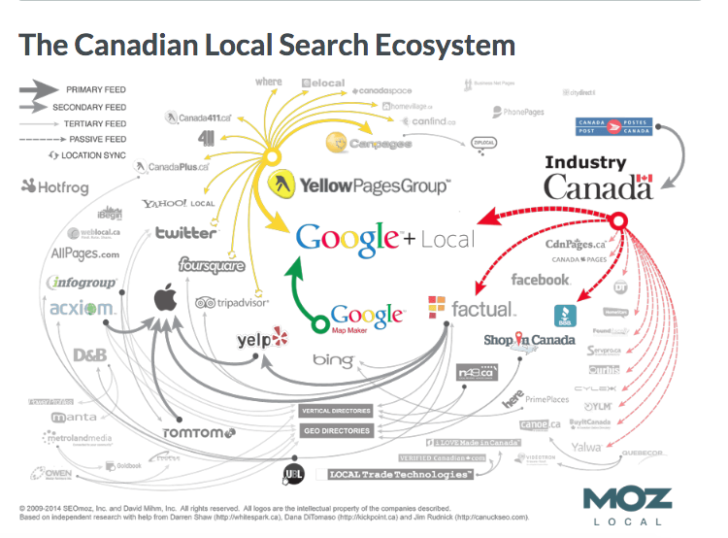
Find here Electric Screwdriver,Kilews torque driver, Electrical Screwdriver manufacturers, suppliers & exporters in India. Kilews Electric Screwdrivers indiais regarded as the best quality electric screwdriver in India and has a very high reputation in the market.
ReplyDelete